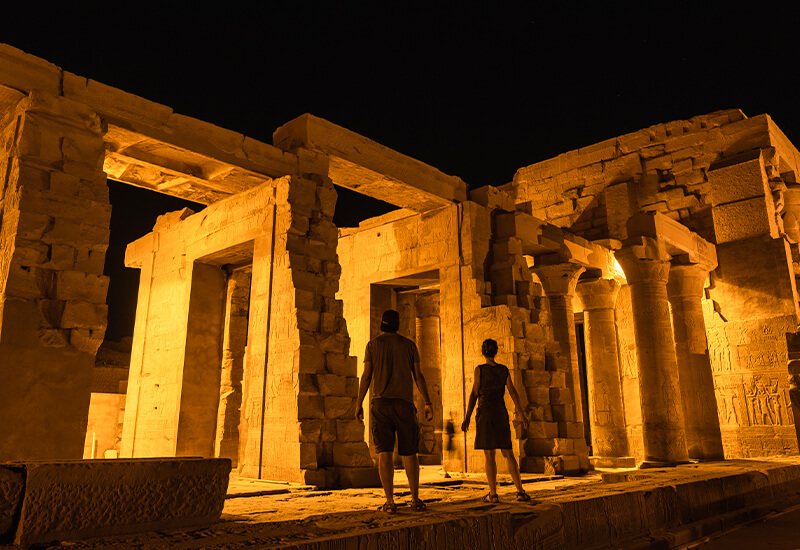
Ancient Egyptian Cities were some of the most impressive in the ancient world. The ancient Egyptians had a rich, varied culture lasting over 3,000 years. They were one of the first people to build a society. One of the most exciting things about ancient Egypt was how they planned and built their cities. Memphis and Thebes were grand, and Amarna was constructed differently. In this blog, we will go into more detail about how ancient Egyptian cities were planned and built.
Egypt vacation packages and Nile River cruises are a great way to combine history, adventure, and relaxation. Egypt vacation packages give you a chance to learn about the culture and traditions of the area and see the country’s lively cities and charming villages. Egypt vacation packages and Nile River cruises offer a unique and unforgettable way to travel that combines the best of both worlds. This is true whether you’re looking for a romantic getaway, a family vacation, or an adventure with friends.
Urban planning and architecture of ancient Egyptian cities
Urban Planning in Ancient Egyptian Cities
Ancient Egypt had a very organized and sophisticated way of planning cities. Several things, like the Nile River, the location of natural resources, and the religious and political importance of specific areas, affected how ancient Egyptian cities were set up. Most cities comprised a grid of streets and avenues that met at right angles. Most of the time, the roads were narrow and winding to protect people from the sun and wind.
Ancient Egyptian cities were built with the needs of the people in mind. There were different districts in cities, and each one had its job. Residential areas were usually on the city’s edges, while markets, temples, and government buildings were in the middle. It’s climate and natural surroundings also shaped the city. For example, cities in desert areas had more open spaces to provide shade and protection from the sun.
Architecture in Ancient Egyptian Cities
Ancient Egyptian architecture was known for being grand and hard to understand. The architecture of ancient Egyptian cities was made to be valuable and beautiful. Symmetry, balance, and proportion were given a lot of attention. Most buildings were made from things that were found nearby, like limestone and sandstone.
The use of columns was one of the most exciting things about ancient Egyptian architecture. Columns supported the roof’s weight and made an open space where light and air could flow. The columns often had intricate carvings and paintings showing Egyptian mythology and history scenes.
The use of hieroglyphs was another essential part of ancient Egyptian architecture. Hieroglyphs were used to decorate the walls of buildings and tell religious and historical stories. Many times, colorful paintings and carvings were made to go with the hieroglyphs. This made for a unique and beautiful visual language.
Conclusion
The ancient Egyptians were intelligent and creative because of how they planned and built their cities. With a strong focus on symmetry, balance, and proportion, the towns were made valuable and pleasant to look at. Ancient Egyptian cities were also built with columns and hieroglyphs, which were used to create open spaces and communicate religious and historic ideas. Overall, how ancient Egyptian cities were planned and built was a big deal in human history, and they still make people feel awe and wonder.
Ancient Egyptian Cities
1. Memphis: the ancient capital of the Old Kingdom
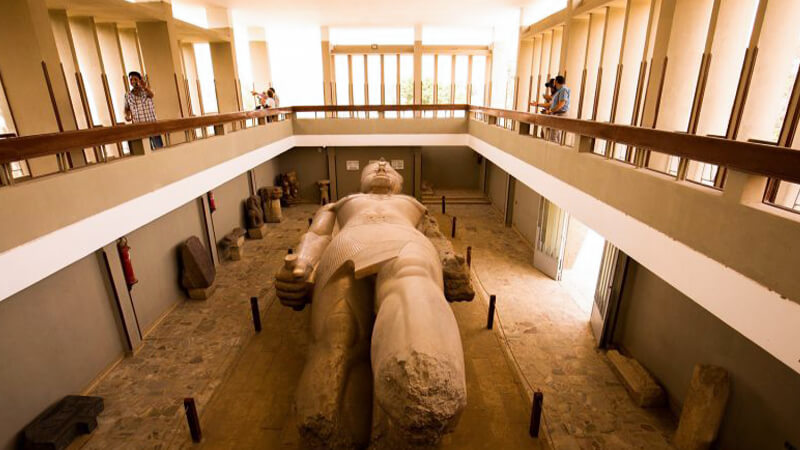
During the Old Kingdom, Memphis was the capital of Egypt. It was in the Nile River valley (c. 2686-2181 BCE). It was the political and cultural center of ancient Egypt for more than 1,500 years and was home to some of the most impressive and important buildings in the ancient world. Memphis was essential to ancient Egypt’s history, from the Great Pyramid of Giza to the Temple of Ptah.
History of Memphis
Memphis was founded by the pharaoh Menes in the 31st century BCE. It was named after the nearby capital of the goddess Hathor, called “Ineb Hedj,” or the White Walls. Memphis was in a good spot near the Nile Delta, making it an important trade and business place. During the time of the Old Kingdom, Memphis was the capital of Egypt and an important city for the rest of Egypt’s history.
Monuments of Memphis
The Great Pyramid of Giza, just outside Memphis, is one of the most impressive structures. This vast building is the largest of the three pyramids in the Giza pyramid complex, and it was built as a tomb for the pharaoh Khufu. The Great Sphinx, a statue made of limestone with a human head and a lion’s body, is also near the pyramids. It is thought to be from the time of Khafre, who built the second-largest pyramid at Giza.
The Temple of Ptah, in the middle of Memphis, was one of ancient Egypt’s most important places of worship. The temple was made for the god Ptah, who was in charge of making things and working with his hands. The temple was one of the largest and most impressive religious buildings of its time, and it had several courtyards, halls, and chapels.
The colossal statue of Ramesses II, made of limestone and standing more than 30 feet tall, is another impressive building in Memphis. The figure used to be at the Temple of Ptah, but in the early 19th century, it was moved to where it is now.
Legacy of Memphis
Even though Memphis was abandoned and left in ruins, its history lives on. The ancient Egyptians built a lot of impressive monuments and buildings that still amaze people and give us essential information about their history and way of life. Some of the most influential people in ancient Egyptian history were born in Memphis, like Imhotep, who built the Step Pyramid of Djoser, and the pharaohs Menes, Narmer, and Pepi II.
2. Thebes: The city of Temples
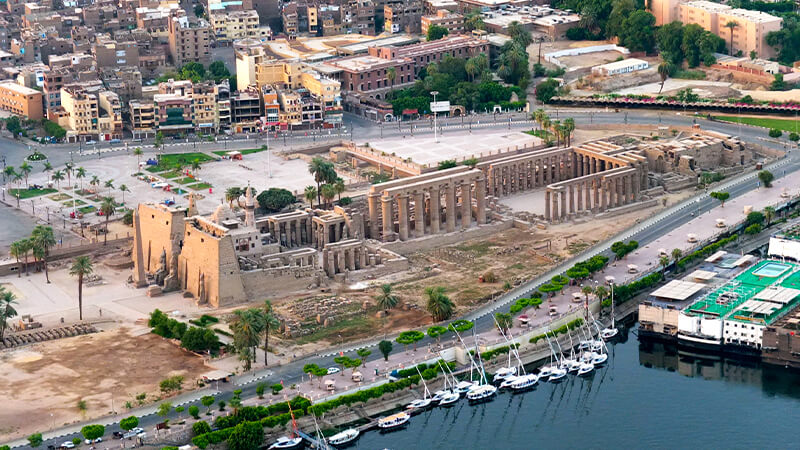
Thebes was an ancient Egyptian city on the east bank of the Nile. It was also called Waset and Luxor. During the Middle Kingdom and the New Kingdom (around 2055–1080 BCE), it was the capital of Egypt. It was also the cultural and religious center of ancient Egypt. The city was home to some of the ancient world’s most important and beautiful buildings, like the Valley of the Kings, and many temples.
The Theban Temples
Thebes was known as the “city of temples” because it was where many of the most important religious buildings in ancient Egypt were located. The Temple of Karnak was one of the world’s most significant and unique places of worship. It was in the northern part of Thebes, and it was built over 2,000 years and was made for the god Amun. The temple complex was one of the most important places for pilgrims in ancient Egypt, and it had several courtyards, halls, and chapels.
The legacy of Thebes
Even though Thebes was abandoned and turned into ruins, its history lives on. Ancient Egyptians built temples and tombs that still made people feel awe and wonder. They also give us important information about ancient Egypt’s history and culture. Ancient Egyptian history’s most influential people were born in Thebes, like Amenhotep III, Akhenaten, and Tutankhamun.
3. Alexandria: the cosmopolitan center of trade and learning
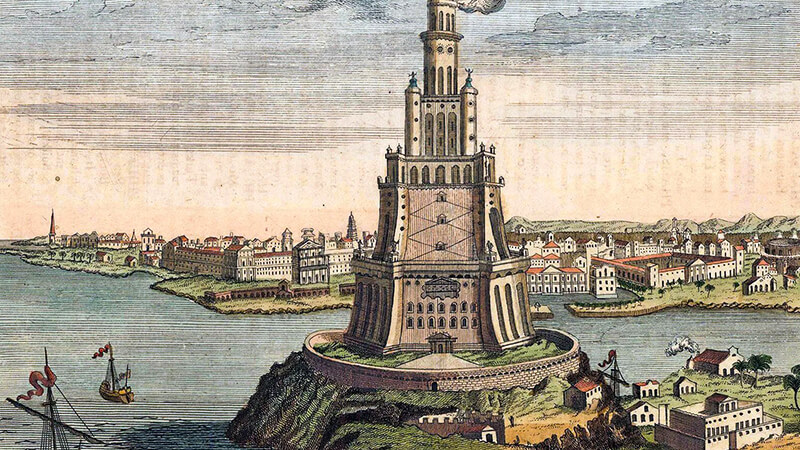
Alexander the Great built the ancient city of Alexandria in 331 BCE, one of the ancient world’s most important cultural and commercial hubs. Alexandria, on Egypt’s Mediterranean coast, became a center of international trade and learning, bringing together scholars, philosophers, and merchants from all over the ancient world.
The Great Library of Alexandria
The Great Library was one of the most well-known places in ancient Alexandria. Ptolemy I started it in the early 3rd century BCE. The library had more than 500,000 books and manuscripts, making it one of the most extensive and complete in the ancient world. Scholars from all over the Mediterranean came to the library because it was a place to find information and research.
The Pharos Lighthouse
In the 3rd century BCE, the Ptolemaic dynasty built the Pharos Lighthouse, a well-known building in Alexandria. The lighthouse was over 100 meters tall, making it one of the tallest buildings in the ancient world. It was also considered one of the Seven Wonders of the Ancient World.
Trade and Commerce in Alexandria
Alexandria was also a prominent place for business and trade. The city’s port was one of the busiest in the Mediterranean, and the town became a hub for trading goods like textiles, spices, and precious metals. Merchants from all over the ancient world came to Alexandria because of its wealth and prosperity, and the city’s cosmopolitan atmosphere added to its cultural and intellectual wealth.
Decline of Alexandria
Even though Alexandria was influential and wealthy, its fortunes began to fall after the Romans took over Egypt in the 1st century BCE. The Great Library was destroyed during Roman rule, and the city’s intellectual and cultural life faded. Alexandria stayed a vital city, though. Many important things happened in late antiquity, like the start of the Christian Church and the Islamic conquest of Egypt in the 7th century CE.
4. Abydos: the religious center with the Temple of Seti I and the Osireion
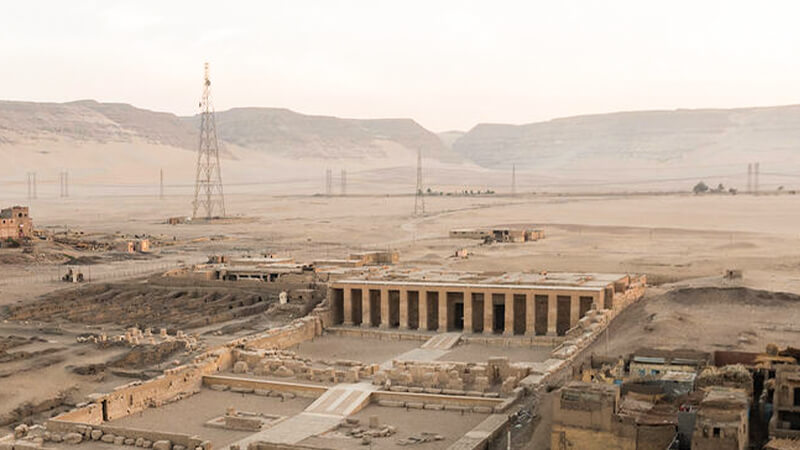
Abydos, in Upper Egypt on the west bank of the Nile River, is one of the oldest cities in ancient Egypt. The city was an important religious center with many temples and shrines for different gods.
The Mythical Origins of Abydos
In ancient Egyptian mythology, Abydos was thought to be where the god of the afterlife and the underworld, Osiris, was buried. The Egyptians believed that going to the city and its temples would bring them closer to the god, so they made it a pilgrimage site.
History of Abydos
The first people moved to Abydos during the Predynastic Period (around 6000 BCE), but the city became important in the Old Kingdom (around 2686-2181 BCE). Several pharaohs and their wives were buried at Abydos during this time, including the legendary First Dynasty king Narmer.
Temple of Seti I
The Temple of Seti I, which was built during the time of the New Kingdom, is one of the most important religious sites in Abydos (c. 1550-1070 BCE). The temple is dedicated to Seti I, one of the greatest pharaohs of the 19th Dynasty. It has intricate carvings and paintings of scenes from ancient Egyptian mythology.
The Osireion
The Osireion is an underground temple that is thought to be the tomb of Osiris. It is another important religious site in Abydos. The temple was built during Seti I. Archaeologists have been stumped by its complicated design and substantial stone columns for centuries.
The Later History of Abydos
During the Pharaohs’ time and even the Greco-Romans’ time, Abydos was an important religious center (c. 332 BCE–395 CE). The city was also a central trade hub, with goods coming and going from its harbor and markets.
5. Amarna: the revolutionary city of Akhenaten and the Amarna art style
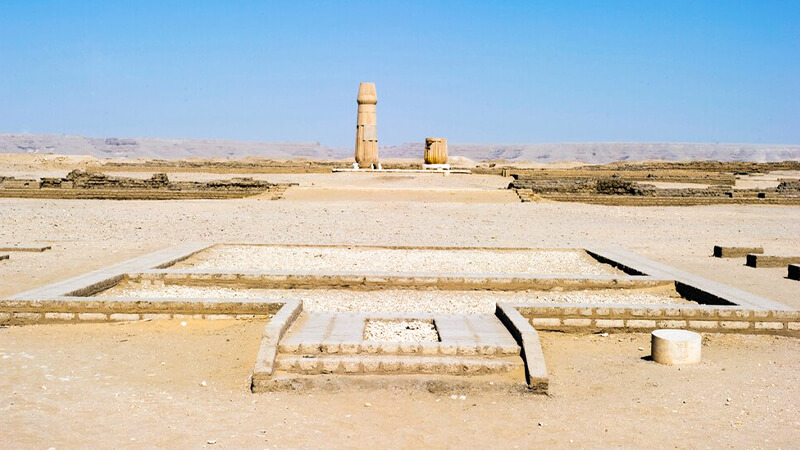
During the reign of Pharaoh Akhenaten, also known as Amenhotep IV, the city of Amarna in Middle Egypt was the capital of ancient Egypt. The town was founded during the 18th dynasty of the New Kingdom period, around 1346 BC, and was dedicated to worshipping the sun god Aten. Here is a closer look at Amarna’s history and the unique art style that came out of it.
The Reign of Akhenaten
Akhenaten was an unusual pharaoh who didn’t believe in the traditional Egyptian religion of many gods. Instead, he worshipped the Aten, which is the sun disk. He built Amarna as a sign of his new religious and political ideas, emphasizing the pharaoh’s god-like power. The city was built quickly and had a unique style that was different from the designs of traditional Egyptian temples and palaces.
The Art of Amarna
The art made during the Amarna period, also called the Amarna art style, differed significantly from traditional Egyptian art. People, especially Akhenaten and his family, were shown in the art more naturally and individually. The art also showed that the Aten was the only god Akhenaten and his followers worshipped. The Aten was often portrayed as a sun disk with rays that ended in hands holding ankhs.
The Decline of Amarna
After Akhenaten died, his successors quickly left the city and its religion, returning to the old belief in many gods. The city was left in ruins, and later it was used to get stone and other materials for other projects. The city wasn’t found again until the 1800s, and it wasn’t until then that people realized how important it was to Egyptian history.
The Legacy of Amarna
Even though Amarna was only around briefly, it significantly impacted Egyptian history and culture. The art style from Amarna affected art from later times, especially during the reign of Pharaoh Tutankhamun, who went back to the traditional polytheistic religion but also used elements of the Amarna style. The city also significantly impacted the rise of monotheism, especially in the Abrahamic religions of Judaism, Christianity, and Islam, whose worship of a single god is similar to that of Akhenaten.
6. Heliopolis: The city of the sun god Ra and the site of the Temple of Re-Atum
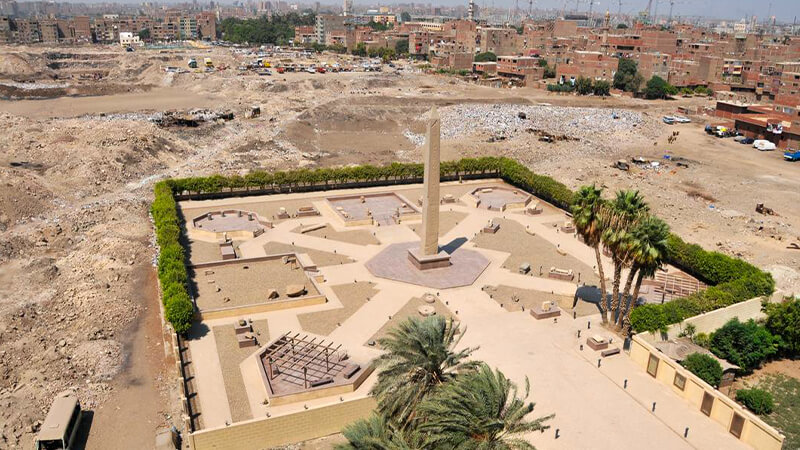
Heliopolis, also called “On,” was an important religious and cultural center in ancient Egypt. Here are some ways to learn more about the exciting history of this city:
History of Heliopolis
Heliopolis was in the eastern part of the Nile delta in the northern part of Egypt. The city’s name, “Heliopolis,” means “city of the sun,” and people used to think that the god Atum made the world there. The city was known for its large temple to the sun god Ra, and it was one of the most significant and vital temples in ancient Egypt.
Importance of Heliopolis in Ancient Egypt
In ancient Egypt, Heliopolis was a center of learning and art. It was home to the well-known “House of Life,” where people went to learn and research things like medicine, astronomy, and math. The city was also known for its obelisks, like the famous “Cleopatra’s Needle,” which now stands in London’s Thames Embankment.
Heliopolis during the Old Kingdom
During the Old Kingdom (2686–2181 BCE), Heliopolis was the center of the sun cult, and its temple was the most important place of worship in Egypt. The leaders of the Old Kingdom thought of themselves as the sons of the sun god Ra, so they often built many structures in Heliopolis to honor him.
Heliopolis during the Middle and New Kingdoms
During the Middle Kingdom, from 2055 to 1650 BCE, Heliopolis was still an important religious center but less important politically. However, during the New Kingdom period (1550-1070 BCE), Heliopolis regained its importance as a center of learning and culture. In honor of the sun god, the pharaohs of the New Kingdom often built obelisks and other large structures in Heliopolis.
Decline of Heliopolis
Heliopolis began to decline in importance during the Late Period (712-332 BCE) as other cities, such as Memphis and Thebes, became more critical politically and religiously. Later, during the Roman era (30 BCE–395 CE), the city was destroyed, and most of its buildings were taken apart and used to build other things.
Rediscovery of Heliopolis
Archaeologists have found Heliopolis again in modern times. They have dug up some of the city’s old buildings, such as the Temple of Ra and the remains of the House of Life. Obelisks and other monuments from the city have also been found, and many of them are now on display in museums worldwide.
7. Elephantine: A vital trading center and religious site with the Temple of Khnum
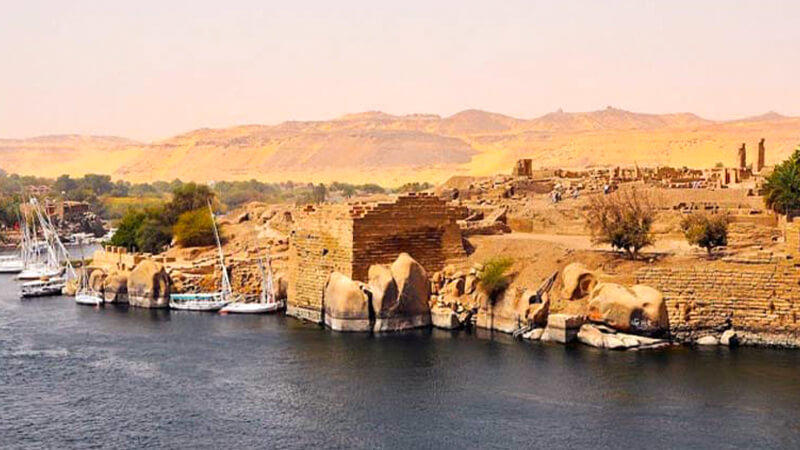
The Nile River in southern Egypt has an island called Elephantine. It was an important city in the past because it was a good trade place and a religious center. Here’s a closer look at Elephantine’s history and what it meant in ancient Egypt.
The History of Elephantine
Evidence of settlements on the island of Elephantine shows that people have lived there since the 4th millennium BCE. It was first called Abu or Yebu, and it was a place where the Nubians, who were known for their gold, ivory, and rare animals, could trade. Later, the Egyptians moved to the island, and it became an important place for trading goods from Africa, Arabia, and India.
The Importance of Elephantine in Ancient Egypt
Elephantine was a hub for merchants and traders because it was a place to do business. It was also an important place for making papyrus, used for writing, boats, rope, and other things. The Temple of Khnum, a god thought to have caused the Nile River, was also on the island, making it a vital religious center. The temple was supposed to be one of ancient Egypt’s most important places of worship. People came from all over the country to pay their respects to the god there.
The Role of Elephantine in Egyptian History
Throughout its long history, Elephantine was an essential part of Egypt’s military and political life. During the Old Kingdom, an army stronghold guarded Egypt’s southern border. During the Middle Kingdom, it was the center of a powerful trading empire that covered all of Nubia and the coast of the Red Sea. Later, during the New Kingdom, it was a strategic point of control for trade with the south and a starting point for military campaigns into Nubia.
The Decline of Elephantine
Even though Elephantine had been necessary for a long time, it eventually started to lose its importance. When new roads and ports were built along the Nile and the Red Sea, it lost its reputation as a military and trade center. The temple of Khnum was still a significant place of worship, but as the old religion gave way to the new, more and more people stopped going there.
8. Hermopolis: An Ancient Egyptian City of the God Thoth
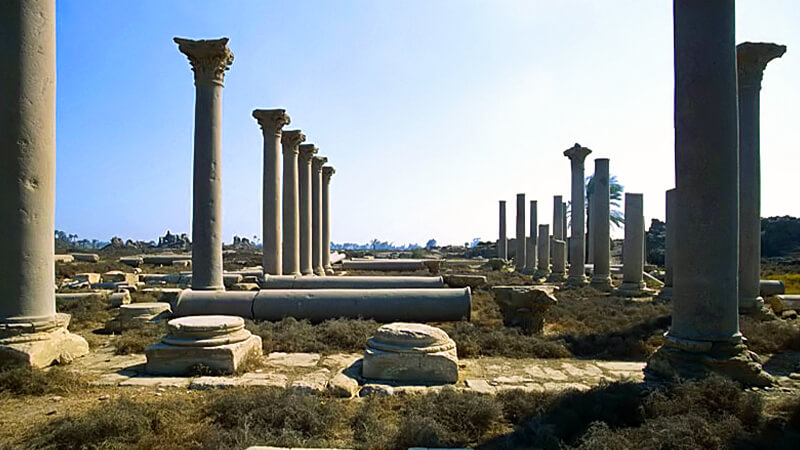
Hermopolis was an important city in ancient Egypt, also known as Khemenu. Hermopolis was in the middle of the country, close to where El-Ashmunein is now, and it was a center of learning, religion, and business.
During the Predynastic Period, which ran from about 5500 BCE to 3100 BCE, Hermopolis was built. At this time, the city was just a tiny town by the Nile River. Over time, the city grew in size and importance until it became the capital of Upper Egypt’s fifteenth nome.
Hermopolis During the Pharaonic Period
During the Pharaonic Period (3100 BCE to 332 BCE), Hermopolis was where the god Thoth, the god of writing, knowledge, and wisdom, was worshipped. People also knew the city for its hieroglyphics, which they thought were written in the language of the gods.
At this time, the Temple of Thoth was one of the essential parts of Hermopolis. This temple was built during the New Kingdom (1550–1070 BCE). It was a place where people could worship Thoth. It was a big building with many rooms, halls, and courtyards. Many priests lived in the temple, and it was their job to take care of it and perform rituals and ceremonies.
Hermopolis Under Greek and Roman Rule
In the fourth century BCE, the Greeks took over Hermopolis and changed the city’s name to Hermopolis Magna. The Greeks kept Thoth as the city’s primary god but also brought new gods and goddesses.
From 30 BCE to 395 CE, when the Romans were in charge, Hermopolis continued to be a center of learning and business. There were a lot of schools and libraries in the city, and it was also a central trade hub for the area.
Notable Features of Hermopolis
Besides the Temple of Thoth, Hermopolis was known for several other exciting things. These things are:
The Hermopolitan Ogdoad: was a group of eight gods that people in Hermopolis worshipped during the Old Kingdom (2686 BCE to 2181 BCE). The Ogdoad was thought to represent the four sets of male and female gods who, together, made the world.
The Temple of Neith: The Temple of Neith was a temple for the goddess Neith. During the Late Period, Neith was the patron goddess of Hermopolis (664 BCE to 332 BCE).
The Tomb of Hesy-Ra: This tomb is in the cemetery of Hermopolis. It was built during the Third Dynasty (2670 BCE to 2613 BCE). Hesy-Ra was a significant person who worked for King Djoser.
In conclusion
The ancient Egyptians left a rich legacy of beautiful cities that still fascinate and inspire people worldwide today. From the grandeur of Memphis to the spiritual power of Thebes, these cities were centers of cultural, religious, and economic activity that shaped the history of Egypt and the world. By looking at their ruins, writings, and artifacts, we can learn more about what this great civilization did well and what problems it faced. As we keep looking into and digging up ancient Egyptian cities, we can expect to learn even more about the people who built them and the societies they made.
In conclusion, Egypt day tours and Tailor made Egypt Tours are great ways to learn about and experience the country’s fascinating history, culture, and natural beauty. Egypt has something for every kind of traveler, whether you want to see the ancient pyramids and temples of Luxor, take a boat ride down the Nile, or relax on the beautiful beaches of the Red Sea.

